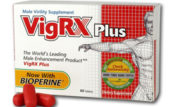By Steven Hutchings
 I was in Athens when it happened. An immediate, stinging sensation that shot up my right leg as I stepped off the curb and awkwardly put the full brunt of my weight – and the 50 pound backpack on my shoulders – on my right ankle, which twisted as it touched the ground.
I was in Athens when it happened. An immediate, stinging sensation that shot up my right leg as I stepped off the curb and awkwardly put the full brunt of my weight – and the 50 pound backpack on my shoulders – on my right ankle, which twisted as it touched the ground.
The body’s not so quick to forget things like that. I repeated the same injury at least five times over the next ten years, while running, stepping down stairs and otherwise not paying attention to what the heck I was doing. And every time it was the same ankle, which sprained, turned purple and took weeks to heal.
Can you relate? Do you live with chronic pain in your knees or other areas of your body that, like mine, wasn’t so quick to forgive?
Your knees hurt for a similar reason. Your joints absorb your movements as you go about through life. But joints wear down for a variety of reasons, from diet and repetitive movements to the sometimes increased weight they support. Roughly one in three Americans report joint pain in the previous 30 days. The likely culprit? Ongoing joint inflammation, which you may know as arthritis.
What Are Joints?
Joints are where bones meet, like the hip and knee. They’re made of synovial fluid, cartilage and ligaments and supported by muscles and tendons.
Synovial fluid is a thin layer that feeds nutrients to the joint and reduces friction. Ligaments are bands of tissue that connect your bones and stabilize your movements. And cartilage is the rubbery substance that covers the ends of your bones. They all work together to provide stability, flexibility and pain-free movement.
Cartilage is very durable and can change shape as required to adapt to your movement. However, in some people it becomes stiff and loses elasticity. This strains your tendons and ligaments, as they’re not designed for this function. Cartilage can wear down as well, to the point that, in some cases, the bones grind against each other, with nothing between to absorb the movement.
Arthritis
While inflammation is your body’s natural reaction to injury or illness, ongoing joint inflammation can lead to tissue damage. This is called arthritis, and it affects an estimated 70 million people in the United States alone. There are more than 100 types of this often debilitating condition, with some of the more common including:
Osteoarthritis – The ‘wear and tear’ on your joints. This is the most common form of arthritis and occurs when cartilage wears away and the bones rub against each other, causing pain and swelling. OA can develop in any joint, but it’s most common in the hands and weight-bearing joints like the knees, hip and joints of the spine.
Some people call this degenerative joint disease.
Rheumatoid Arthritis – A chronic ailment for many, in rheumatoid arthritis, the immune system mistakenly attacks itself and causes the synovium to swell, after which it spreads to the surrounding tissue and eventually damages your cartilage and bones.
Rheumatoid arthritis can occur anywhere except the lower back. It’s most common in the hands, wrists and knees. Occasionally it can spread to the nerves, eyes, skin and lungs.
Gout – This is a painful condition in which the body can’t get rid of natural, needle-like crystals in the joints, called uric acid. Gout tends to develop in the wrist, knees and big toe.
Symptoms and Risk Factors
Symptoms of arthritis can vary among individuals. Though osteoarthritis does not usually spread beyond the joint, other forms of arthritis may cause fatigue, rash, fever and signs of inflammation including:
pain
swelling
stiffness
tenderness
redness
warmth
People with arthritis may find that soreness occurs where it did not before, or that joint pain takes longer to heal than in previous times.
Researchers continue to search for the genes responsible for arthritis. We do know that lifestyle factors play a role, as do age and gender. Known lifestyle factors that can lead to arthritis include obesity and jobs with heavy lifting and repetitive movements. Risk of arthritis increases with age and it occurs more frequently in women than men.
Treatment For Arthritis
Joint pain can be acute (when it acts up sporadically) or chronic. In either scenario, it’s advisable to speak with your doctor. You can reduce joint pain with medication, physical therapy or an alternative treatment like a glucosamine supplement. Your goal is to:
1) Diagnose the problem
2) Reduce the pain and inflammation
3) Preserve joint function
For moderate to severe joint pain, you can try an over the counter or prescription nonsteroidal anti-inflammatory drug (NSAID) like aspirin or ibuprofen. Higher in strength, a new generation of NSAID, the cox-2 inhibitor, may offer further relief, though at present all but Celebrex have been taken off the market as they’re linked to increased risk of heart attack and stroke.
 NSAIDs may cause gastrointestinal bleeding, as well, and generally work best as a short-term treatment.
NSAIDs may cause gastrointestinal bleeding, as well, and generally work best as a short-term treatment.
You can also try a topical cream. Capsaicin, for example, is a substance found in chili pepper that may relieve arthritis, as it blocks substance P, which transmits pain signals, and triggers the chemicals that nullifies them, called endorphins. You may find similar relief from an arthritis cream with methyl salicylate, better known as Ben Gay.
You may also want to speak with your doctor about injections, physical therapy, or depending on the severity of arthritis, home care.
Natural Supplements For Joint Pain
Some people find that alternative treatments, like acupuncture, can reduce joint pain. In similar fashion, there’s an entire industry of natural treatments for arthritis, among which a supplement with chondroitin and glucosamine may be worth your attention.
This makes more sense that you may realize. Glucosamine and chondroitin are both compounds that occur naturally in cartilage and decrease with age. Yet there are no dietary sources of either, meaning you can only get them with a supplement.
Research continues, with current evidence pointing to a 2006 double blind study, in which scientists found that glucosamine provided “significant improvement” for mild to moderate pain from osteoarthritis. Chondroitin shows promise too; in the same study, researchers found that it reduced joint pain, preserved function and lowered reliance on NSAIDs.
According to the Mayo Clinic, chondroitin works best when used between six and 24 months. You might also look for natural joint relief supplements with the following ingredients:
Avocado Soybean Unsaponifiables – When you mix hydrolized soybean and avocado oils you get avocado soybean unsaponifiables (ASU). In 1997, researchers found that ASU improved joint pain and function. Adding weight to that, a 2002 study documents that ASU “significantly reduced the progression of joint space loss.”
Calcium – Think of bones and you think calcium. You may be surprised to learn, however, that your body uses calcium each time your heart pumps and a muscle contracts. And if you don’t have enough calcium? You siphon it from your bones!
When exercising, run on an elliptical machine for less of a hit to your legs and spine. Try low impact cardio exercises too. At the top of that list? Swimming.
Ginger – Research is ongoing with this ancient spice and whether or not it can reduce joint pain. What we do know is that ginger is a natural anti-inflammatory, demonstrated in a 2008 study published in the journal Food and Chemical Toxicology. With that being proven, it’s not an extraordinary leap to deduce that ginger may reduce joint pain as well.
Omega-3 Fatty Acids – They’re good for your heart and they’re good for your brain. But omega-3 fatty acids may also reduce joint stiffness and tenderness. You can get omega 3 fatty acids through your diet, or, more conveniently, with a natural supplement like OmegaDaily.
Arthritis Prevention
Your joints are like the suspension in a car. The ride will be quieter and a lot more enjoyable if you take care of your body, with healthy weight management, a nutritious, balanced diet and regular exercise.
 Ironically, though aerobics and high impact exercise, like running, are good for your heart, they’re notoriously bad for your joints and can contribute to the general wear and tear that constitute osteoarthritis. When exercising, run on an elliptical machine for less of a hit to your legs and spine. Try low impact cardio exercises too. At the top of that list? Swimming.
Ironically, though aerobics and high impact exercise, like running, are good for your heart, they’re notoriously bad for your joints and can contribute to the general wear and tear that constitute osteoarthritis. When exercising, run on an elliptical machine for less of a hit to your legs and spine. Try low impact cardio exercises too. At the top of that list? Swimming.
Consider the following lifestyle factors that should reduce your risk of arthritis and joint pain. True, some people are more genetically prone to arthritis than others, but at the very least, you can reduce that risk and the pain you’d otherwise experience, with:
Weight Management – Obesity increases your risk of arthritis and strains joints, especially the legs and hip. Moreover, it cuts off blood circulation to your organs, which can make joint pain worse. Aim for a body mass index (BMI) between 20 and 23 and you’ll take a load off your joints – literally.
Exercise – Good for your heart, your waist and, assuming you practice low impact exercises, your joints. Exercise strengthens the tissues surrounding your joints and improves flexibility. Beneficial exercises for people with joint pain include tai chi, yoga and water aerobics. Speak with a personal trainer for a specialized exercise regimen.
Eat a Healthy Diet – If you are what you eat, folks with joint problems should be a fruit, vegetable, whole grain product or source of omega-3 fatty acids like salmon or walnuts. And they most definitely don’t want to be a high glycemic carbohydrate or processed food (among many others, that’s french fries, sugar-rich snacks and some cereals like Corn Flakes).
Remember the adage, if it can go bad, it’s good for you. If it lasts an unusually long time, it’s stuffed full of preservatives and ain’t got no business in your body.
Three Good Resources For Arthritis Help
We live in a global village. That’s good news for people with arthritis, as it removes borders and brings folks together, many of whom live with daily joint pain and suffering and who know the challenges you go through each day. You’ll likely find them at:
WebMD – This is the kind of site that puts some doctors out of business, because there’s so much information here! Got a question about arthritis? You’ll probably find it at WebMD’s Arthritis Health Center.
Arthritis Foundation – A lot of people feel your pain. That’s where the Arthritis Foundation comes in, connecting patients to community programs across the nation and with e-newsletters, a magazine and information on everything from arthritis research to products that reduce joint pain.
Arthritis Today – Another great resource for people with joint pain, Arthritis Today offers tips on a variety of topics, including nutrition and weight loss, treatments and arthritis-friendly exercise. There is plenty of valuable information here.
+Steven Hutchings




